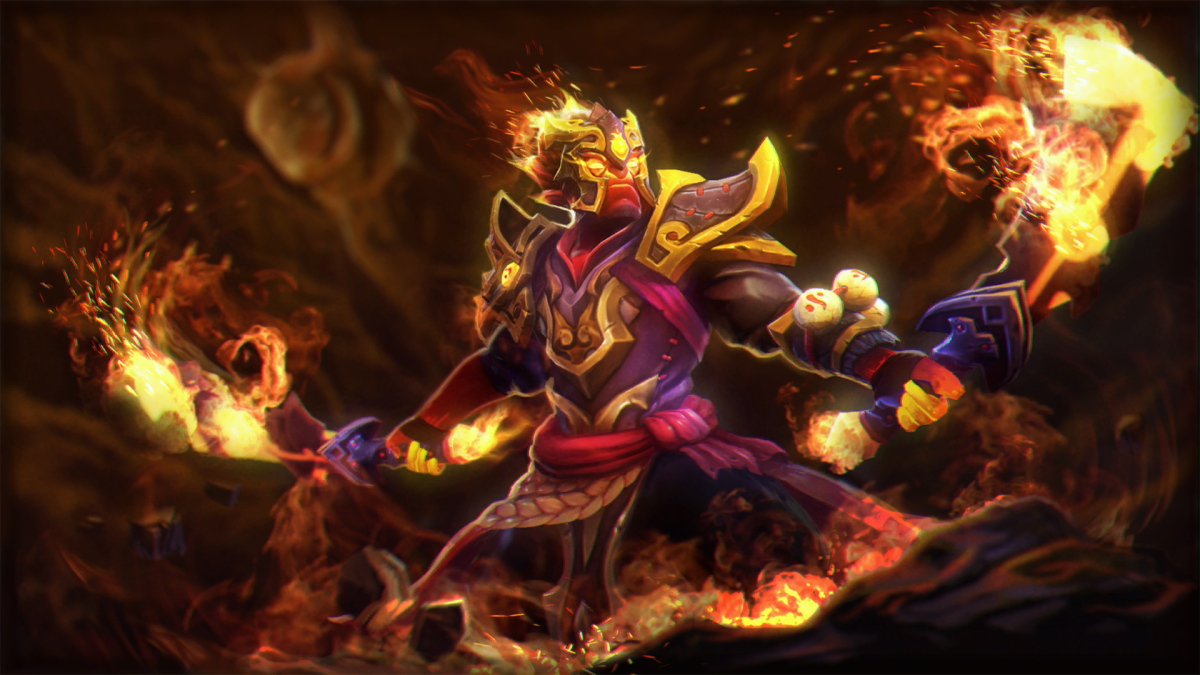Ember Spirit, Shadow Demon, and Death Prophet were the three most popular Dota 2 heroes at the WePlay! Pushka League. With a total of 136 games played in Divison One, all three heroes made an appearance in the picks and bans more than 110 times. Ember Spirit clocked in 127 appearances, which translates to more than 90 percent of drafts.
When it comes to the most-picked hero, it was mostly the supports that starred. Grimstroke made 54 appearances, followed by Ember Spirit with 47, and Rubick and Oracle shared third with 43 games played.
The three highest win rate heroes with over 10 games played belonged to Bane, Bounty Hunter, and Mars. Both Bane and Bounty Hunter had a rather small sample size and Mars’ win rate is skewed with Liquid’s Samuel “Boxi” Svahn having a flawless 6-0 record on the hero.
The Pushka League was the first high profile tournament on the 7.26c patch, a talent nerfing update following extensive measures by Valve to curb the prevalence of laning and deathballing. Here’s what you need to know about the most popular heroes from this event.
Ember Spirit: Jack of all trades, master of many
Xin the Ember Spirit was the most-contested hero in the draft and ended up being the second-most picked hero. Plus, he ended up with a 59-percent win rate in spite of his ubiquitousness.
The most recent patch nerfed his powerful level 10 damage talent but helped boost his late game by improving two of his most commonly picked talents: the Sleight of Fist hero damage and Remnant charges restore time.
The hero is also a flex pick that can fill either the safe lane or mid lane roles capably. He’s a quick farmer with Flame Guard, allowing him to retreat to the jungle should things go awry. Xin’s constant poking with Sleight of Fist and long-range initiation with the Sleight-Searing Chains combo means that he always represents a kill threat, especially with a lane partner.
The most common item build for the hero is to rush Phase Boots and Spirit Vessel, providing the hero with much-needed armor and health that allows him to fight early on in the game. With Teleport Scrolls and Boots of Travel nerfed, Xin remains one of the few heroes that can abuse fountain regeneration using a Fire Remnant. Ember’s chasing ability is one of the best in the game and a quick Vessel in a core role allows him to both kill enemies and sustain his allies consistently.
Plus, the hero’s early prowess doesn’t gimp his late-game potential. The hero can vary his item builds tremendously, allowing him to suit his team’s needs. Need more physical damage? Get Desolator and wreck face with Sleight of Fist, which is further boosted by his level 20 talent. Need more lockdown? Get the additional Searing Chains duration talent. Need to assassinate the pesky enemy supports? Get Aghanim’s Scepter and jump them when they least expect it.
Ember Spirit’s tremendous versatility, ability to recover, and scaling capacity mean that the hero rarely feels like he’s in a bad place. He remains one of the best support killers and is capable of becoming a powerful secondary carry whether it’s by dealing magic or physical damage.
Shadow Demon: Dual-bladed support
Shadow Demon was a largely forgotten hero in 7.24, but the second-most popular contest rate and a 60-percent win rate show that the hero has returned to the spotlight.
Capable of taking either support roles, the hero is a lane dominator with his Shadow Poison spell that can easily punish opponents with its exponential stacks. The hero also serves as a capable initiator with Disruption, which acts as a secondary save. The hero shares this capacity with Oracle, who has Fortune’s End and a litany of ways to bail out an ally.
Overall, Shadow Demon is the more aggressive choice since buffs to Demonic Purge have made the skill incredibly effective against heroes that rely on buffs, such as Necrophos. An Aghanim’s Scepter upgrade makes the skill Break, which is useful against heroes like Bristleback and Huskar that heavily count on their passives to survive.
When played as a position four, it’s not uncommon for the hero to be able to find farm since he can clear creep waves fairly reliably with maxed Shadow Poison. Disruption and Soul Catcher also both serve as scaling offensive spells. Disruption can make illusions of an enemy carry and Soul Catcher’s percentage nature allows it to remain useful later into the game.
Death Prophet: The best pusher in the game
Death Prophet refuses to quit. The hero has been nerfed repeatedly after surging back into the competitive scene thanks to an added movement speed buff on Exorcism and reduction on Spirit Siphon’s cooldown. Death Prophet was the most-banned hero (88) and was only played 23 times, but mustered a 61-percent win rate.
Spirit Siphon makes the hero a laning monster and nearly impossible to gank. It’s not uncommon to see a dying Death Prophet get off multiple Spirit Siphons, allowing the hero to turn a situation that most other heroes can’t survive. The Siphon deals percentage damage as well, meaning that it remains powerful later in the game.
Crypt Swarm ensures that the hero is a capable farmer, while Silence is a good secondary disable. Its AoE nature also means that when timed right, both spells can be used without reply on targets that are Cycloned by Eul’s, a common pickup for Death Prophet.
Yet, it’s Exorcism that makes this hero truly incredibly. It’s a teamfight, pushing, and chasing spell all built into a long-lasting status effect. For nearly half a minute, Exorcism turns you and your team into a force of nature, with the only choice often being evacuation. Buying an Aghanim’s Scepter upgrades the spell and gives extra ghosts that help your farm and slow down your opponents, further improving your catch potential.
Teams have experimented with playing the hero in the side lanes, but her most powerful role remains in the mid lane. Quick levels and gold make the hero a menace, and if her counterpart chooses to leave the lane, it’s more than likely that they’ll return to the mid lane with the tier-one tower in shambles.







Published: May 14, 2020 09:15 am